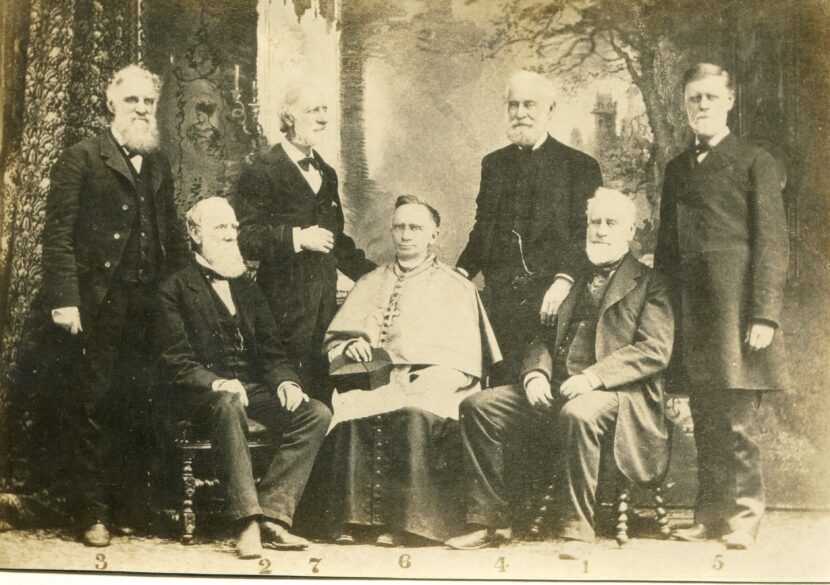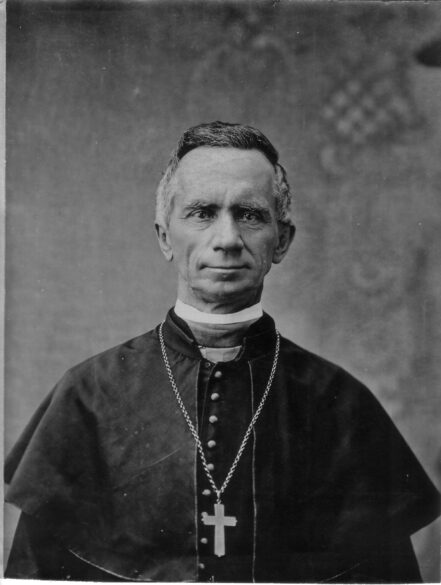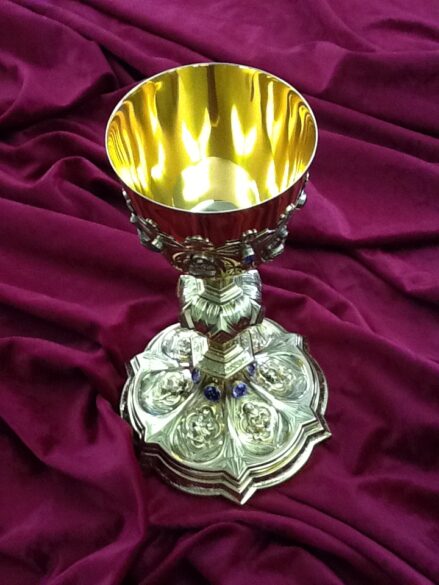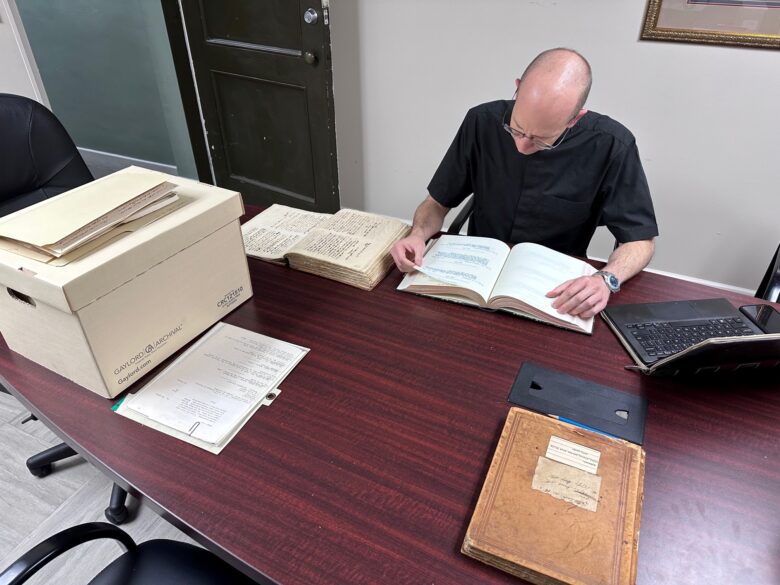From the Archives
By Mary Woodward
JACKSON – This past week our diocesan archives hosted Father David Endres, a priest of the Archdiocese of Cincinnati and Dean of the Athenaeum of Ohio/Mount St. Mary’s Seminary where he is professor of church history. Father Endres is also historical theology editor of U.S. Catholic Historian. Father Endres is working on completing an official biography of our third bishop, William Henry Elder.
Bishop Elder, a native of Baltimore, was our bishop from 1858 to 1880 when he was named Archbishop of Cincinnati.
On our diocesan website, we have this brief description of Bishop Elder’s tenure here in Mississippi.
One of his first actions was to appoint Father Mathurin Grignon vicar general of the diocese. He was a capable and energetic administrator who established a strong foundation on which the modern diocese was built.

Father Grignon, who also served as pastor of the cathedral, had come to Natchez to teach in the school established by Bishop Chanche. It was he who administered the last sacraments to Bishop Van de Velde.
Wanting to make a good impression on Bishop Elder, Father Grignon, the Sisters of Charity and parishioners worked to improve the still unfinished interior of the cathedral, completing the woodwork and windows. By 1859, the task was completed.
Bishop Elder entrusted the running of the cathedral parish to Father Grignon while he traveled throughout the large Diocese to assist struggling parishes. At the same time, St. Mary Cathedral was also assisting missions attached to it in Grand Gulf, Port Gibson, Cedar Creek, Rodney, Fayette, Meadville and Woodville.
D’Evereux Hall, an orphanage for boys, was opened in Natchez.
During Bishop Elder’s administration, the Civil War consumed the nation in violence and bloodshed for four years. Known as a saintly and scholarly man, Bishop Elder wrote to his father on the eve of the Civil War: “It is hard to tell what is to be the fate of the country. I have not enough of political sagacity to see what will be the course of events, nor what would be the fruit of the remedies proposed. … We can all unite in praying to God to guide and protect us.” Bishop Elder ministered to soldiers and celebrated Mass for the wounded throughout the war. He also ministered to a community of freedmen formed in Natchez by slaves who fled after the city was occupied in 1863 by federal troops.
Under Union occupation, the Bishop was expelled from Natchez and imprisoned in Vidalia, Louisiana for refusing to pray for the United States government. Although the war ended in 1865, Union troops remained in Natchez until 1876.


Bishop William Henry Elder and his chalice. (Photos from archives)
Expanding their educational ministry in the diocese, the Brothers of the Sacred Heart opened a school for boys in Natchez in 1865.
Bishop Elder was named coadjutor of the Archdiocese of Cincinnati in 1880 and would later become Archbishop there. When he arrived in Mississippi there were nine priests, 11 churches, three educational institutions, one orphanage and a Catholic population of 10,000.
When he left Mississippi, there were 19 priests, 42 churches, 12 schools for white children, three schools for black children and a Catholic population of 12,500. Among the parishes established during this time was St. Alphonsus in McComb.
For five days, Father Endres poured through original documents, letter books and correspondence from the 19th century carefully indexed by our master archivist, Bishop R. O. Gerow. Working in the diocesan archives vault among all the papers and files in boxes, cabinets stacked to the ceiling, there is a unique feeling of connection with those who have gone before us. We have a national treasure in our vault containing more than 200 years of American and church history.

The diocesan archive collection is only open to research by historians such as Father Endres. It is not like a library where one is able to walk in, browse and pull books off the shelf. Researchers must present credentials and an outline of the project they are researching before being approved for entry.
As archivist, I would then pull and group the information for the researcher to enable accomplishment of the project. For Father Endres’ research, there were 18 extremely fragile letter books, an 11-volume index, approximately 10 cubic feet of documents and several odds and ends in our vault.
By the end of the week, Father Endres had captured a wealth of information for the book. I very much look forward to reading Father Endres’ biography of Elder and placing a copy of it in our diocesan archive collection.
(Mary Woodward is Chancellor and Archivist for the Diocese of Jackson.)
